Arrive in Quito, Ecuador
Apr 19
Travel to Quito, Ecuador. Our local agent will transfer you from the airport to the hotel. If you would like to arrive earlier, we can arrange divergent airport transfers and extra nights.
 Private Trip Available
Private Trip Available Embark on an immersive 12-day odyssey through the Galápagos Islands. Here, extraordinary wildlife roams freely. Begin your adventure with a relaxing visit to Ecuador’s hot springs before boarding the Samba for an unforgettable voyage through the Enchanted Isles, guided by expert naturalist Juan Salcedo. Unveil diverse landscapes filled with unique reptiles, tropical birds, and marine life, including Blue-footed Boobies, Waved Albatross, Galápagos Penguins, sharks, and more. Designed for wildlife enthusiasts and photographers, early and late landings maximize your encounters. Dive into the breathtaking beauty of the Galápagos and uncover the powerful natural forces shaping this remarkable ecosystem—an adventure beyond imagination!
⭐⭐⭐⭐⭐ “I would rate it a “6 = Excellent”. I’d been to the Galapagos 29 years before, and this trip gave me experiences and showed me things that I hadn’t experienced then, both on land and underwater. Every day was filled with excitement and wildlife thrills. Simply one of the best trips I’ve ever been on.” – Mary Marshall |
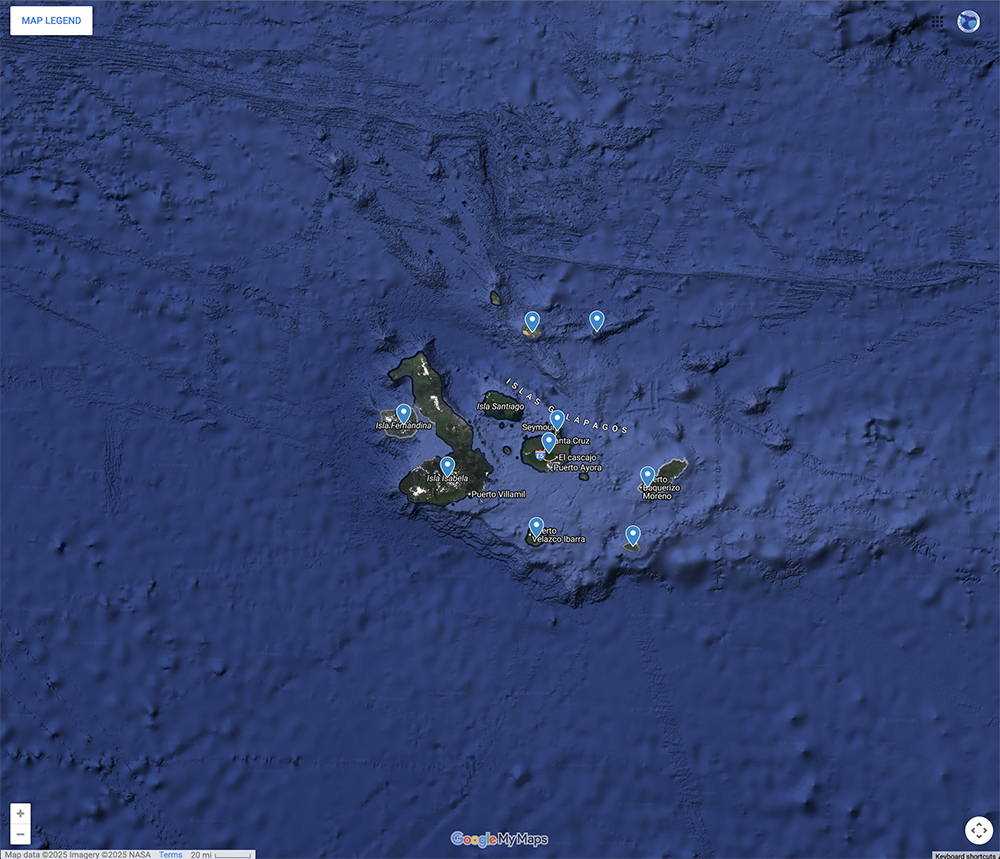
Itinerary Updated: October 2024
| Date | Description | Lodge | Meals |
|---|---|---|---|
| Apr 19 | Arrive in Quito, Ecuador. | Holiday Inn Quito Airport, Quito | |
| Apr 20 | Papallacta Hot Springs: Enjoy a day of exploration and relaxation. | L, D | |
| Apr 21 | Fly to Baltra and board the Samba. First landing on Mosquera Islet. | Aboard the Samba | B, L, D |
| Apr 22 | Genovesa: Explore Darwin Bay and climb Prince Philip’s Steps. | Aboard the Samba | B, L, D |
| Apr 23 | Marchena: Snorkel at Punta Mejía and Playa Negra. | Aboard the Samba | B, L, D |
| Apr 24 | Isabela: Discover Punta Albemarle and Punta Vicente Roca. | Aboard the Samba | B, L, D |
| Apr 25 | Fernandina: Visit Punta Espinoza. Isabela: Explore Urbina Bay. | Aboard the Samba | B, L, D |
| Apr 26 | Isabela: Elizabeth Bay and Punta Moreno. | Aboard the Samba | B, L, D |
| Apr 27 | Floreana: Stops at Post Office Bay and Champion Islet. | Aboard the Samba | B, L, D |
| Apr 28 | Santa Cruz: Tour the highlands and Charles Darwin Research Station. | Aboard the Samba | B, L, D |
| Apr 29 | Floreana: Discover Punta Cormorant, Devil’s Crown, and the Baroness lookout. | Aboard the Samba | B, L, D |
| Apr 30 | Española: Landings at Punta Suárez, with the waved albatross, and Gardner Bay. | Aboard the Samba | B, L, D |
| May 1 | Española: Landings at Punta Suárez, with the waved albatross, and Gardner Bay. | Aboard the Samba | B, L, D |
| May 2 | San Cristóbal: Morning walk around Cerro Tijeretas and visit to the Interpretation Center. Disembark and fly back to Quito. | Holiday Inn Quito Airport, Quito | B |
| May 3 | Depart for home. | B |
Juan grew up in the Galapagos Islands where he developed his passion for wildlife while sailing on his father's boat. He received a degree from the University of San Francisco, Quito after studying Applied Ecology, Biology, and Geology. Juan also earned a skipper certificate after studying sailing and navigation in Los Angeles. Involvement in Environmental Education projects in the Galapagos Islands and on mainland Ecuador fills his spare time.
Travel to Quito, Ecuador. Our local agent will transfer you from the airport to the hotel. If you would like to arrive earlier, we can arrange divergent airport transfers and extra nights.
Drive into the cloud forest of the high Andes to Papallacta Hot Springs for a day of exploration and relaxation. Choose one of the various guided nature walks in the Rancho del Cañón (Canyon Ranch), a 200-hectare protected area at the entrance of the Cayambe-Coca National Park with views of the Antisana Volcano. After a trek into the forest return to the Hot Springs to enjoy a meal and relax in the thermal pools.
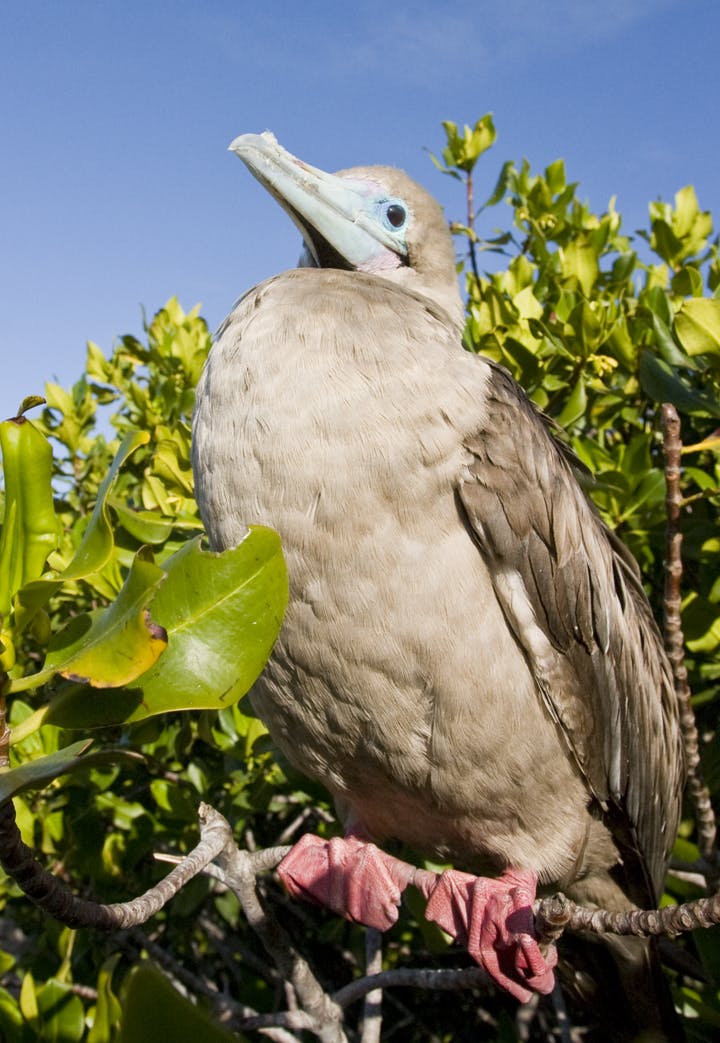
After an early breakfast, transfer to the airport for your flight to the Galápagos Islands. Upon arrival in the islands, you’ll transfer to the dock where the Samba, your home for this glorious adventure, awaits.
All routings and visitor sites on the Galápagos Islands are subject to change by the Galápagos National Park Service to minimize traffic and impact.
After introductions and a safety briefing, you’ll make your first landing at nearby Mosquera Islet where the beach rises from the ocean floor with sand grains as soft as sugar. This volcanic uplift, dating back 100,000 years, is home to Galápagos sea lions, sally lightfoot crabs, and shorebirds. Once back on board, relax with a welcome cocktail and meet the Samba’s friendly, professional crew. In the evening, you will travel to Genovesa in the outer archipelago. As the moonlight beams on the dark waters, look for phosphorescence from ctenophores (comb jellies) and other plankton on the surface. If you are lucky, you may see them appearing to encapsulate dolphins in a glowing shield as they bow-ride with the boat.
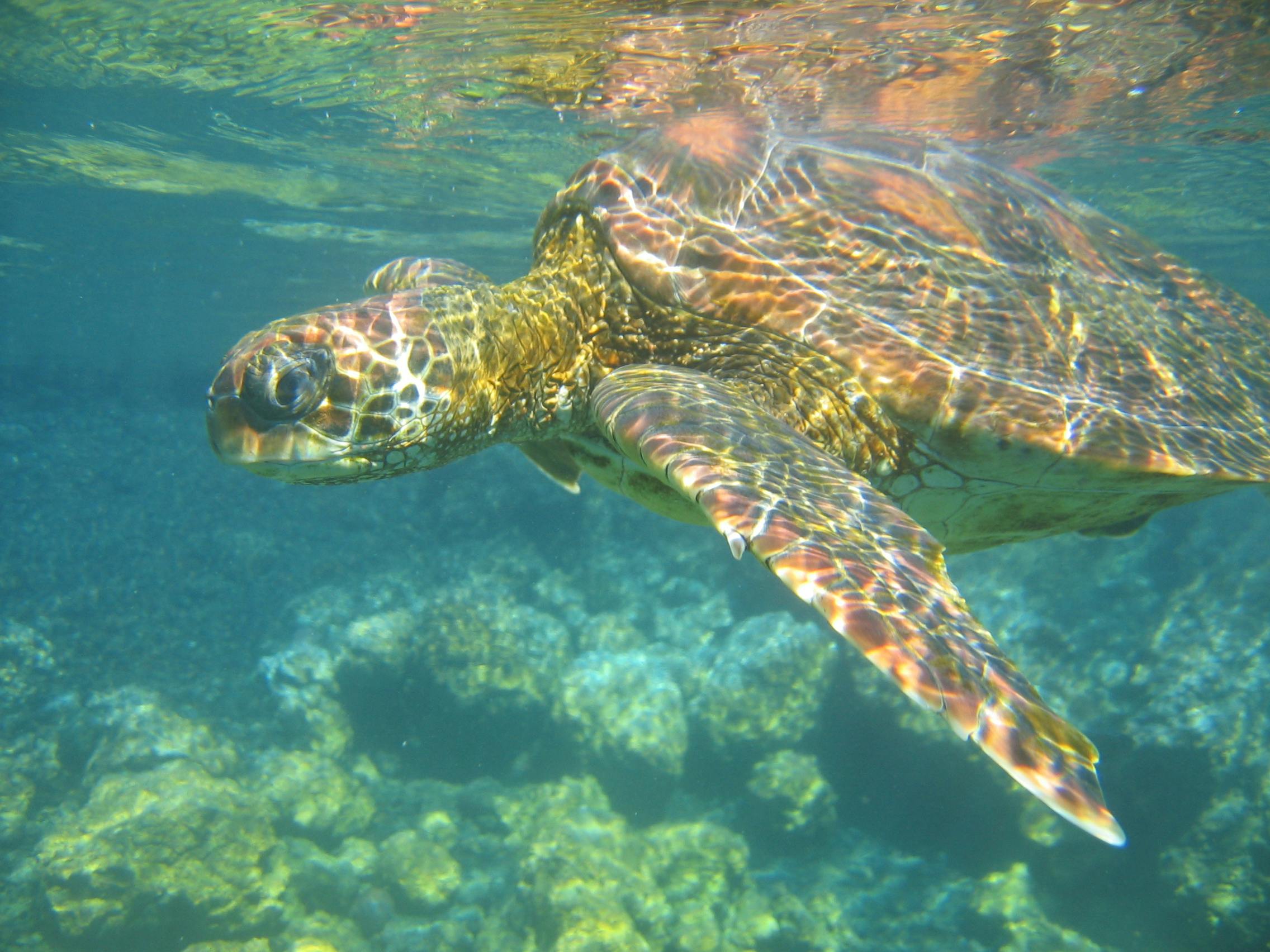
Anchor in the huge flooded volcanic caldera that created Darwin Bay. As you approach, observe the walls of the caldera, which provide wonderful ledges for the very rare Galápagos fur seals and nesting sites of Red-billed Tropicbirds. You will hike up a stony stairway known as Prince Philip’s Steps for great views of Red-footed and Nazca Booby colonies on the way to the Wedge-rumped (Galápagos) Storm-Petrel colony. The island’s largest Red-footed Booby nesting site is located here too. Keep an eye out for the elusive Short-eared Owl that hunts for storm-petrels during the day.
After your first snorkeling of the trip, you’ll end your day with excellent views of Red-footed Boobies and Great Frigatebirds nesting with unparalleled density. Following the cliff edge, photograph and observe incoming boobies and frigatebirds. Frigatebirds are ceaseless with aerial displays of kleptoparasitism as they “dog-fight” along the cliffs for scarce nesting material. Genovesa’s four species of Darwin’s finches – Common Cactus Finch, Green Warbler Finch, Gray Warbler Finch, and Large Ground Finch – show huge variation in bill size, and you can find all four species here (one of the most outstanding sites that you will visit for Darwin’s finches along with the Highlands of Santa Cruz). Unlike trips with shorter itineraries, you’ll have the luxury of anchoring in the calm waters of Darwin Bay for the night.
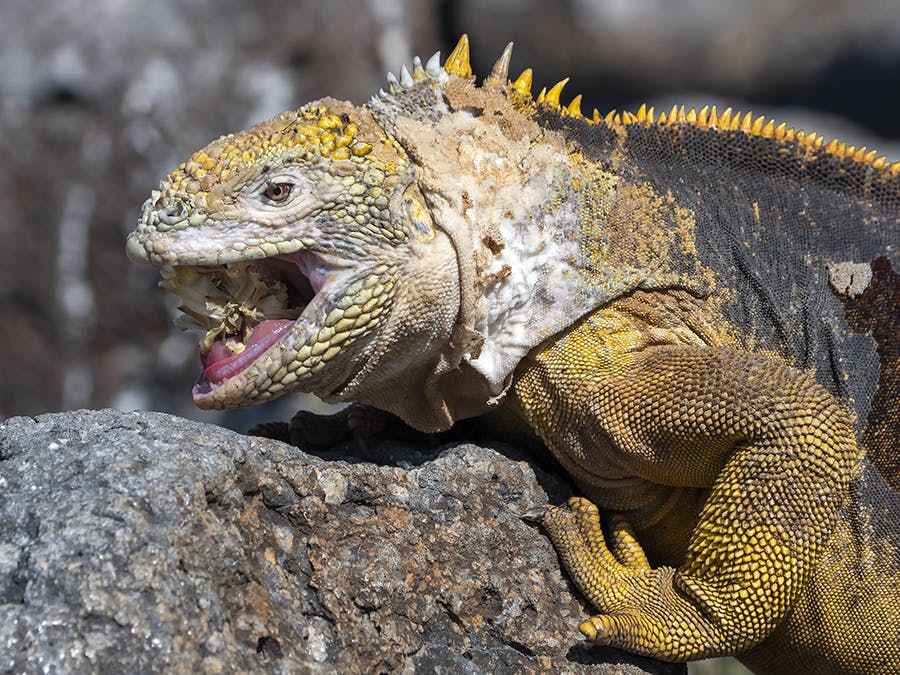
You will have the rare opportunity to visit Marchena, making your experience truly unique. Although landings are not permitted, it is one of the best places to snorkel with tropical fish, rays, sea turtles, sharks, and eels. You may also find hermatypic (reef building) coral formations here, an uncommon sight in the rest of the archipelago. During your navigation to and from Marchena, you sail through some of the most whale-rich waters in the region, so keep your eyes on the horizon and your binoculars ready!
Punta Albermarle is not commonly visited, but home to one of the loveliest Flightless Cormorant colonies in the Galápagos. This landing is your first endeavor on Isabela, by far the largest in the archipelago.
The northwest tip of Isabela, called Punta Vicente Roca, sits at the edge of a sharp drop into deep, nutrient-rich waters. You may see Galápagos Penguins, Brown Noddies, sea turtles, marine iguanas, Blue-footed and Nazca Boobies, marine mammals, and the bizarre-looking sunfish (Mola mola).
En route to Fernandina, keep your eyes out for whales in the cold, deep water on the western side of the archipelago. These waters offer the chance to see orcas, pilot whales, and larger species such as sperm whales. A study by Hal Whitehead, with the help of World Wildlife Fund, found sperm whales particularly abundant west of Isabela where the subsurface Cromwell Current meets land and provides oxygen and nutrient-rich upwellings that supports a high density of squid that they feed on.
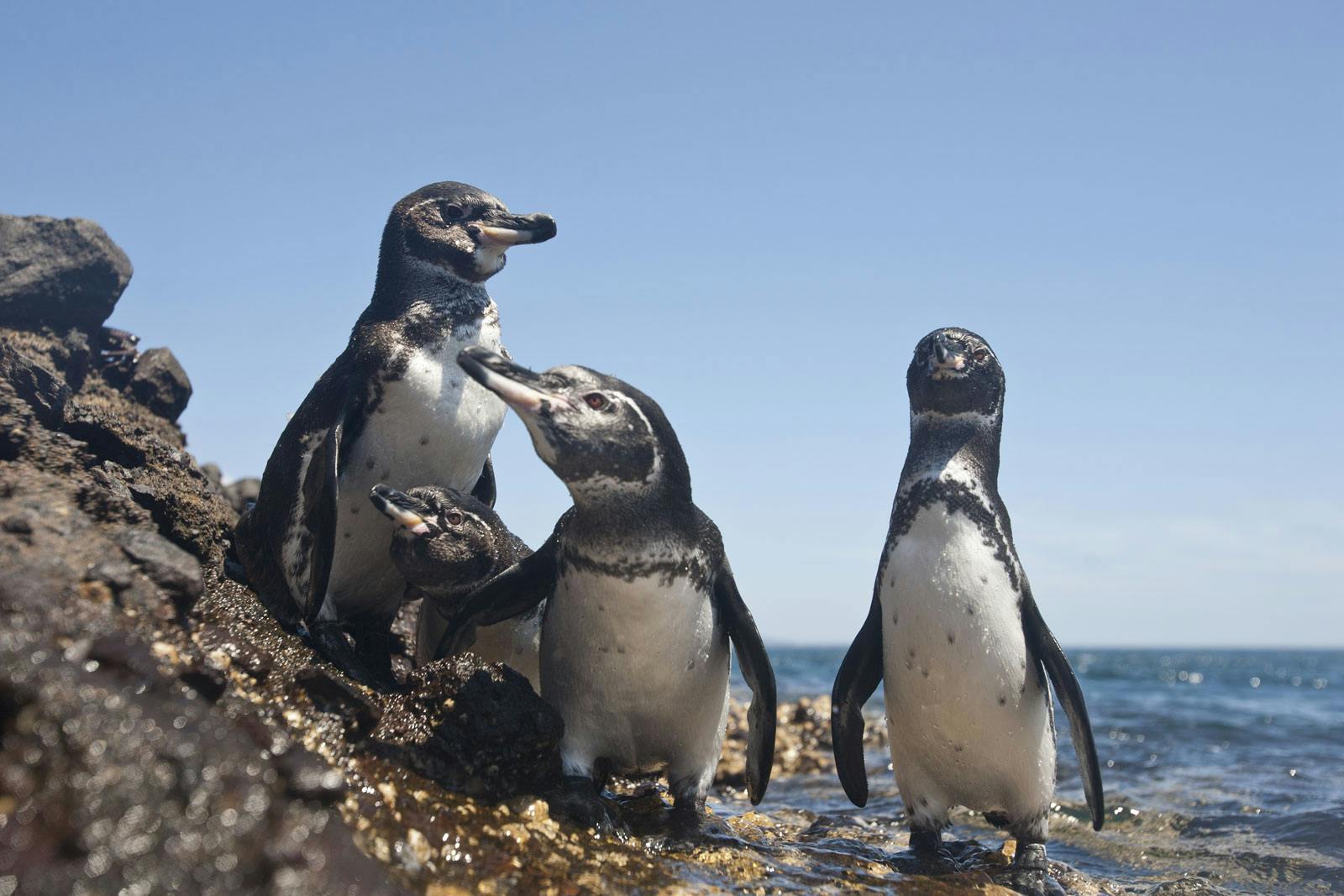
© Cheesemans' Ecology Safaris
Across the calm Canal Bolivar, separating Isabela from Fernandina, sits Punta Espinoza, one of the most wildlife-rich sites of the trip. Fernandina, the youngest of the Galápagos Islands, is one of the world’s most pristine islands because no known introduced animals have become established here. You’ll have the unique opportunity to observe and photograph marine iguanas sunbathing in piles by the hundreds. The famous Flightless Cormorant also inhabits this island along with Galápagos Penguins, lava lizards, and pelicans. Take a walk along the relatively young basalt (lava rock) to find lava cactus (Brachycereus nesioticus), the only species in its genus, growing directly out of what still seems like fresh lava. While snorkeling is not allowed to protect the algae-covered coastline that marine iguanas depend on for food, you will have ample opportunity to observe them as they navigate the reefs.
This afternoon, you head back to Isabela for a very interesting landing at Urbina Bay. In 1954, this portion of Isabela lifted out of the sea so suddenly that fish and sea turtles were literally trapped high and dry on a freshly changed coastline. You will explore this unusual site to examine evidence of the geologic forces that continue to shape these islands. Along your walk, you will find rocks full of bleached shells and massive coral heads now far from the sea. Large iguanas, both land and marine, live here as well as a few giant tortoises, the species for which the Galápagos Islands were named. You will snorkel in some of the coldest water of the trip but, thankfully, your full-length wetsuit will provide insulation as you discover the underwater world.
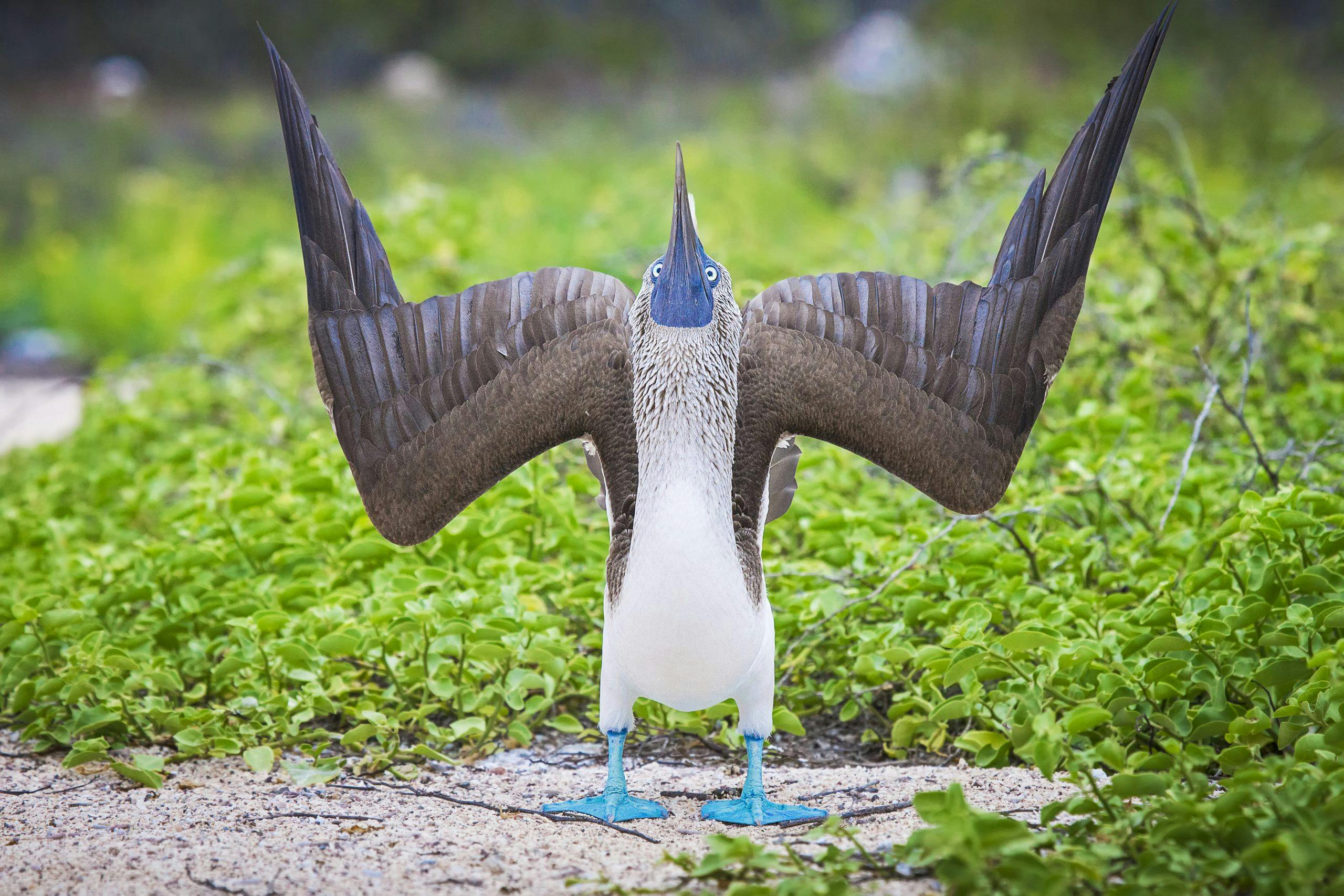
Your morning begins with a visit to Elizabeth Bay, one of the most spectacular locations for panga (small boat) cruising. You cruise with the swimming sea turtles in this paradise, following channels through the verdant green mangrove forests. The endemic Flightless Cormorant and the Galápagos Penguin are in their prime habitat in these cold, rich waters. Then you travel to the wildly stark landing site of Punta Moreno (Dark Point) where raw basalt coats the landscape and rises into the slopes of the shield volcanoes of Sierra Negra and Cerro Azul. Yet amid the stark, seemingly sterile landscape, you’ll discover rich lagoons full of life. This evening, you’ll travel through more nutrient-rich waters excellent for whale watching.
After breakfast you’ll stop briefly at Post Office Bay, where you can continue the whalers’ tradition of dropping a letter or postcard in the box and taking one to hand deliver to someone else. The fantastic landscape of the Floreana highlands is decorated with lichens and epiphytes, while the waters around the island are great for dolphins so keep your eyes open! These waters are also rich with seabirds, such as Waved Albatross, three species of storm-petrels, Galápagos Shearwaters, and large flocks of diving boobies. You’ll spend time visiting Champion Islet off the coast of Floreana before navigating to Santa Cruz Island for a quiet dinner in Academy Bay.
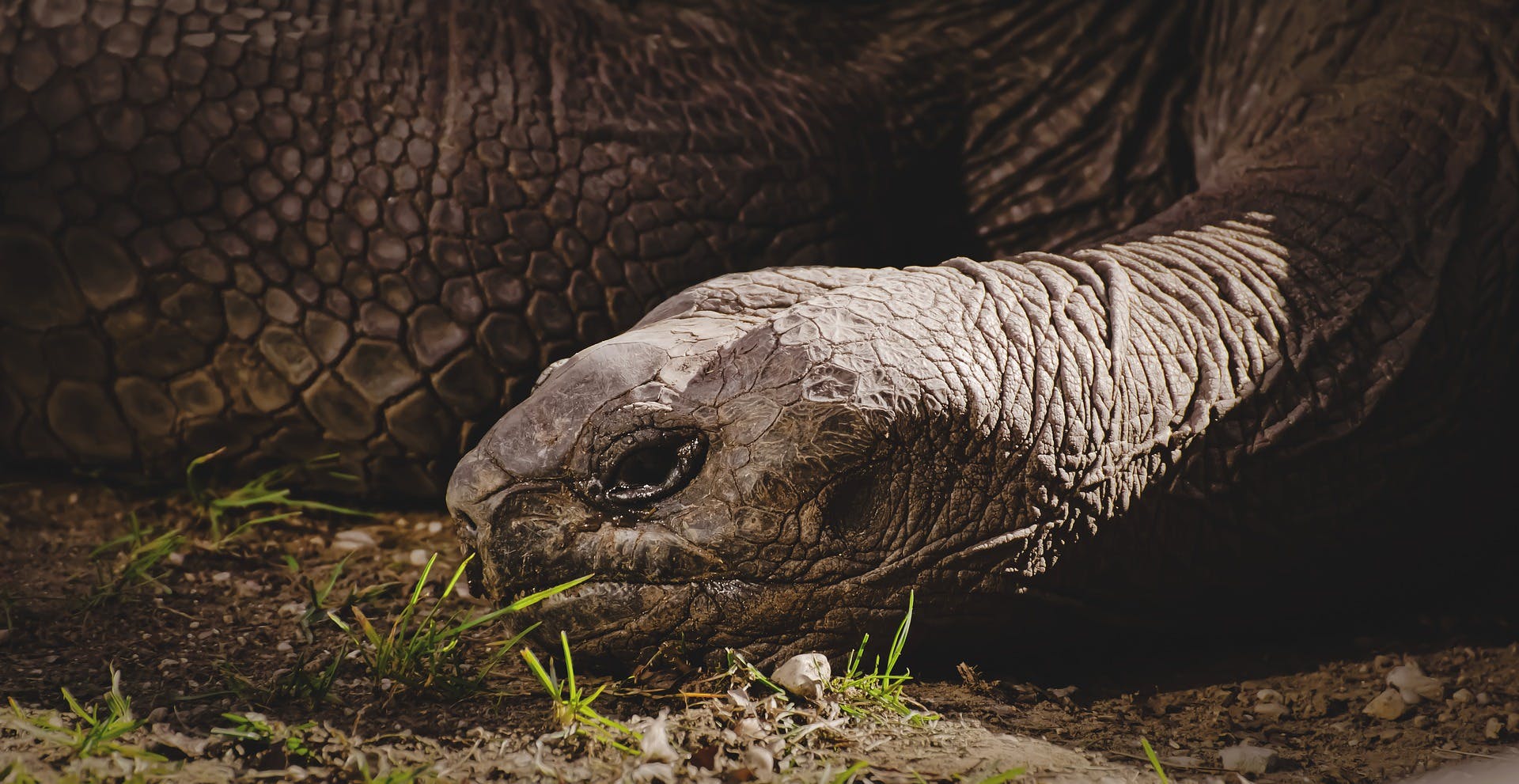
Upon reaching Santa Cruz, you’ll anchor in Academy Bay beside the bustling small town of Puerto Ayora, the islands’ primary population center. You’ll travel to the Santa Cruz highlands to seek out elusive island endemics in beautifully unique habitats. You will explore Los Gemelos, two incredible volcanic sinkholes surrounded by Scalesia forest. The elegantly tall Scalesia trees evolved from beach composites, making it essentially the world’s largest daisy. In the highlands you may see the shy Galápagos Rail, Short-eared Owl, Large and Small Tree Finches, Vegetarian Finch, and the famous tool-using Woodpecker Finch. You will also walk through a lava tube left over from Santa Cruz’s active volcanic island-building days.
You return to Puerto Ayora in the afternoon to visit the Charles Darwin Research Station, the center of evolutionary science and conservation in the Galápagos. Your visit includes the opportunity to see the resident tortoises and enjoy an intimate look at the captive breeding programs whose goal is to return the Galápagos to a more pristine, pre-colonization state. This is one of your best opportunities to photograph tortoises up close.
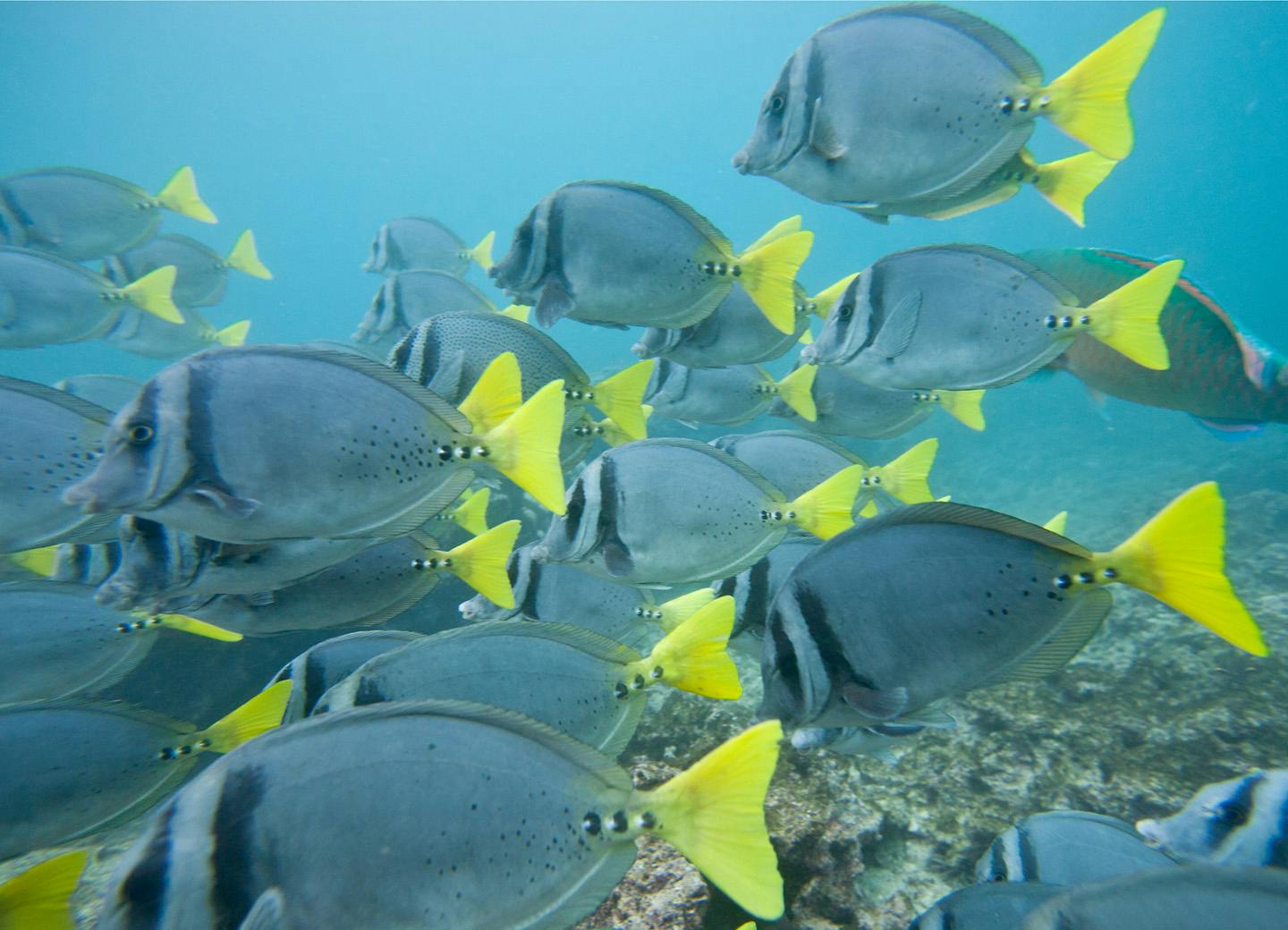
In the morning you will land behind Punta Cormorant for a walk to the Flamingo Lagoon in search of shorebirds and a few flamingoes. The plant life here is unique and includes another species of the endemic composite Scalesia. After returning to the Samba, you will sail to one of the best spots in the world for snorkeling – Devil´s Crown. You normally see rays, sea turtles, surgeonfish, parrotfish, jacks, wrasses, and many other tropical fish. Floreana also holds a compelling human history that includes pirate caves, European settlers, the islands’ first citizen birth, and unexplained disappearances. Experience a piece of this history with a visit to Baroness Lookout.
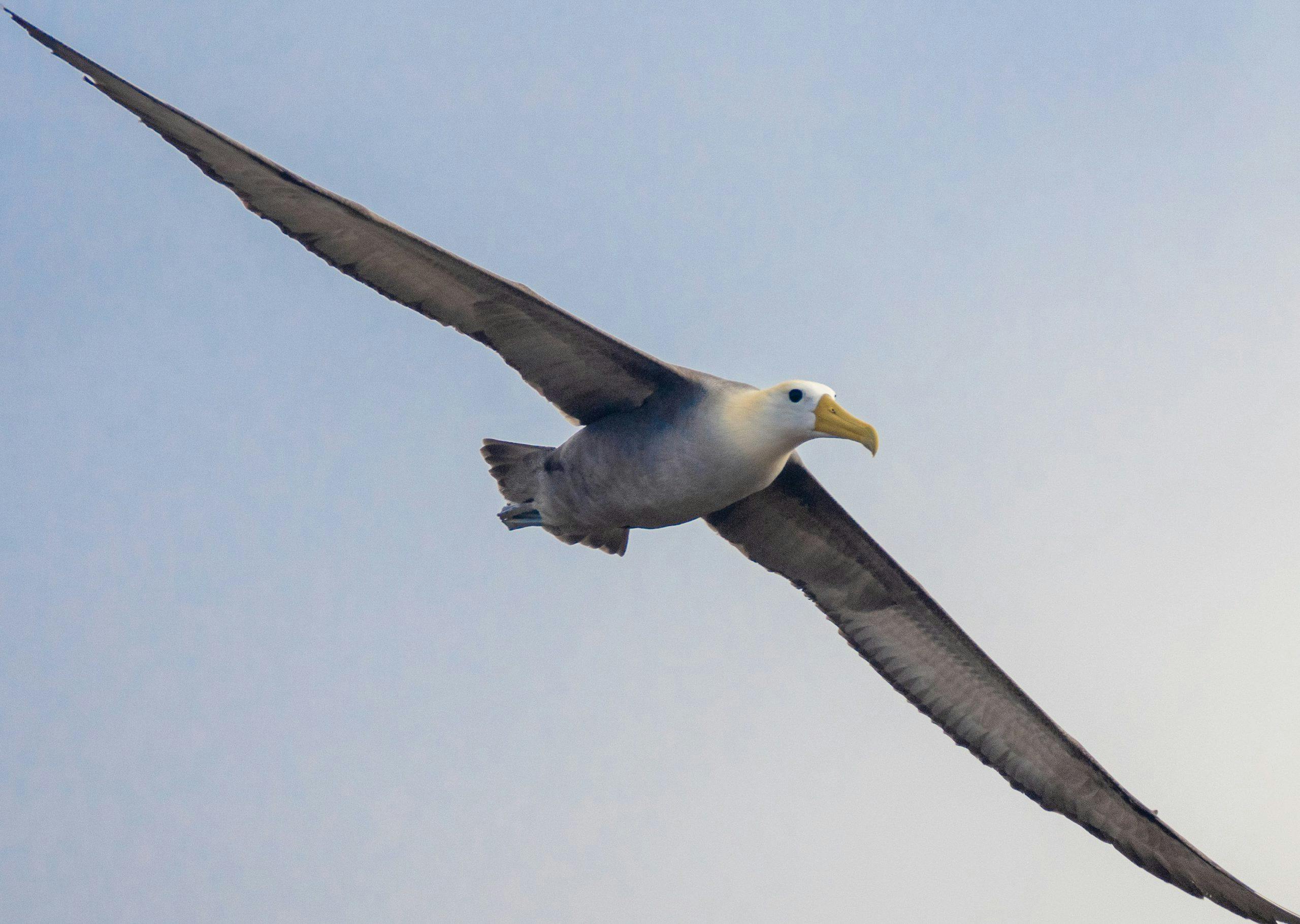
Punta Suárez is unique beyond description and as rich as any spot in the Galápagos Islands. You’ll find huge numbers of breeding birds and iguanas, and most significantly, the majority of the world’s nesting Waved Albatross. Recently paired young adults will court each other, a most enticing expression of the lifelong bond that breeding and survival depend upon – an unforgettable site to observe! You will also find the fearless Española Mockingbird, Blue-footed and Nazca Boobies, Swallow-tailed Gull, Galápagos Hawk, marine iguana, lava lizard, and Galápagos sea lion. The seascapes are spectacular, particularly where the waves force water through a blowhole spouting up to 75ft high.
This afternoon, you’ll sail to Gardner Bay, one of the most beautiful beaches in the Galápagos. A nearby snorkel is likely to find you in the water with playful sea lions. Galápagos sea lions populate the surf while the remarkably brave Española Mockingbird may peck your water bottle for water. Enjoy photographing shorebirds and sea lions, looking for the Large Cactus Finch, or walking along the beautiful beach.
One of the oldest islands is home to Puerto Baquerizo Moreno, the capital and second largest population in the Galápagos Province. In the morning you’ll have an opportunity to stretch your legs at the geologically striking Punta Pitt and examine some of the island’s vegetation, which includes endemic flowering plants such as Calandrinia galapagosa (a plant that resembles a small baobab and is in the Miner’s Lettuce family) and Lecocarpus darwinii (a plant in the Sunflower family). Make a stop at Cerro Brujo, an eroding tuff cone with a beautiful white sand beach and impressive volcanic landscape. Then travel along the north coast for some excellent wildlife and snorkeling at Isla Lobos. Look for frigatebirds, sea lions, sea turtles, Blue- and Red-footed Boobies, tropicbirds, marine iguanas, Swallow-tailed Gulls, and dolphins.
Enjoy your last morning in the Galápagos with a beautiful, scenic walk around Cerro Tijeretas. Followed by a visit to the Interpretación Center, where you will learn even more about the islands’ history. Reluctantly, bid farewell to the Samba and its crew and head to the San Cristóbal Airport for your flights back to Quito.
The Samba is a 78-foot steel-hulled motor yacht, built strong and stable to explore the Galápagos Islands in comfort. With her graceful European Dutch design, she combines performance, charm, and reliability for travelers seeking an intimate, immersive experience.
Her classic lines and high bow help her cut smoothly through ocean swells, ensuring a steadier ride in open waters. A stabilizing sail adds further balance, reducing motion while enhancing fuel efficiency and sailing performance. These features make the Samba ideal for reaching remote island shores and navigating with precision.
Designed for long-range ocean travel, she blends rugged construction with warm, welcoming interiors. Guests can relax and enjoy both safety and style on board. The yacht’s thoughtful layout provides excellent visibility from multiple vantage points, allowing for wildlife viewing throughout the journey.
The Samba hosts just 14 passengers, offering an exclusive, small-group experience far from crowded cruise ships. With fewer guests, the crew delivers personalized service, deeper exploration, and more time ashore. Her size and agility allow landings on smaller beaches and access to isolated coves.
Her decks provide great space for photography, birdwatching, and simply taking in the views. You’ll find comfortable cabins, cozy shared spaces, and opportunities to socialize or enjoy solitude.
Every element of Samba’s design supports the expedition spirit. Her hull handles ocean swells with ease, while her stabilizing sail keeps the voyage smooth. She’s a top choice for travelers who value sustainability, close wildlife encounters, and meaningful adventure.
Whether watching marine iguanas sunbathe or snorkeling alongside sea lions, your Galápagos experience will feel personal and profound aboard the Samba. It’s not just a cruise—it’s an intimate voyage through one of Earth’s most iconic natural wonders.
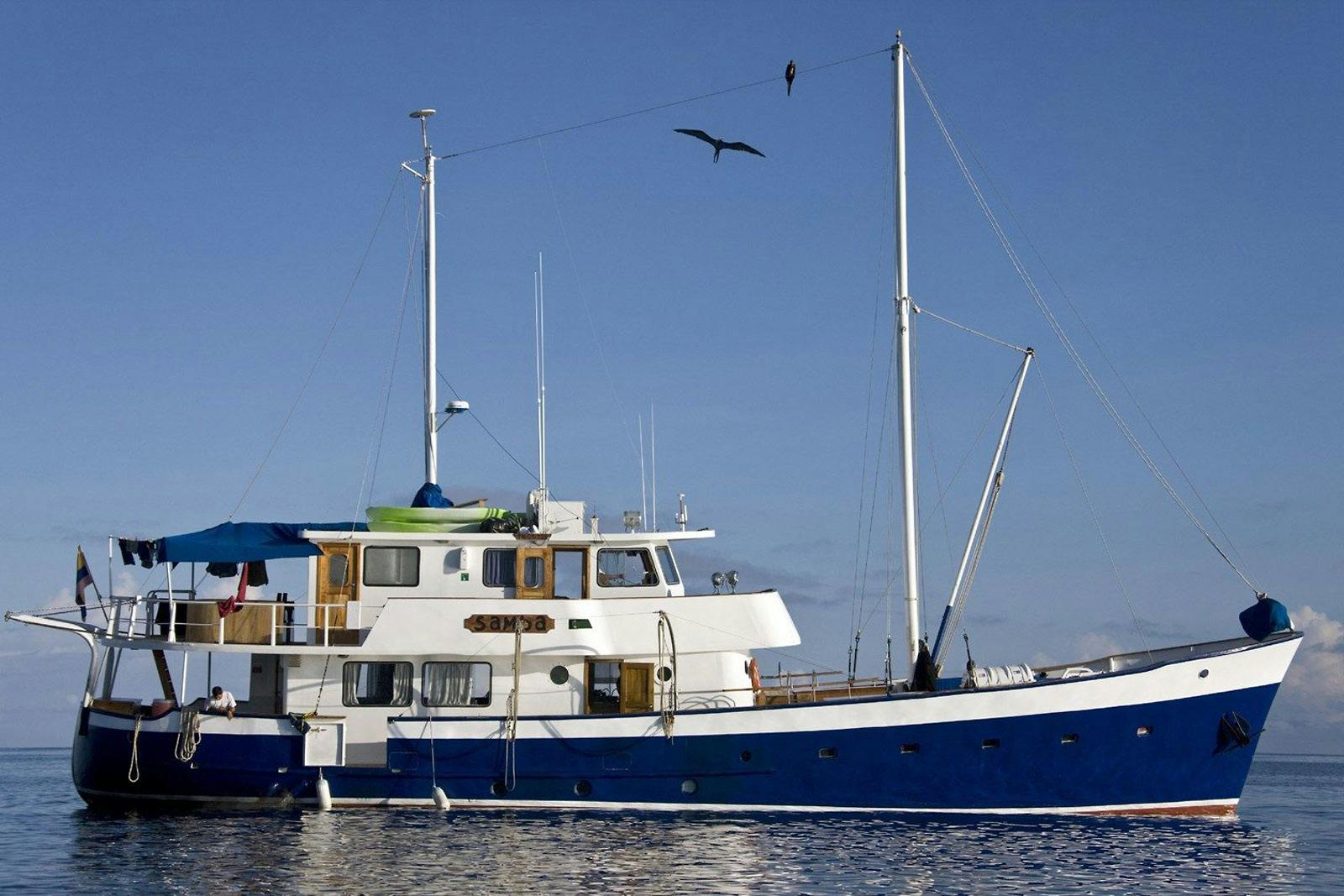
| Type | Description | Cost Per Person |
|---|---|---|
| Lower Deck | Double occupancy, twin-sized upper and lower beds, private bath, and drawers for storage. | $9,500 |
| Upper Deck | Double occupancy, double bed, private bath, windows that open, closet, and drawers for storage. | $10,500 |
Share the Experience – Earn Travel Credit
Know someone who would love this trip? Refer a friend and you’ll both benefit—you get credit toward a future adventure, and they receive a discount on their first trip with us. See how our Referral Program works ›
Costs are per person, depending on cabin type, double occupancy, not including airfare, singles extra. See Included and Not Included sections for more details.
If you are a single traveler, we will try to find a roommate for you, but if we cannot pair you with a roommate, we will not charge you a single supplement. If space is available, some cabins can be booked as a single by adding 90% over the listed cabin cost.
We cannot guarantee a specific cabin number, but if changes occur, we will assign a cabin of equal or greater value.
| Payment | Due Date | Amount Per Person |
|---|---|---|
| Deposit | Due now to reserve your space | $500 |
| Final | November 9, 2025 | Remaining balance |
Payments are due based on the schedule above. All reservations require a deposit to confirm reservation of your space.
Refunds are given depending on the time left before departure, according to the following table. Through November 9, 2025, the cancellation fee of $300 per person can be applied toward another trip if reserved within six months of the canceled trip’s departure date. Cancellations are non-transferable.
Average temperatures range from the low to mid-60s°F (15 to 18°C) at night up to the 80s°F (26 to 31°C) during the day. The water temperature averages 70 to 74°F (21 to 23°C). Average temperatures during your mainland excursion range from nighttime lows in the 50s°F (10 to 15°C) to mid 60s°F (18°C) to daytime highs from mid 60s°F (18°C) to low 80s°F (26°C).
Walks on shore vary from short strolls on the beach to a few miles over uneven terrain. If you are not accustomed to walking long distances, you will still enjoy most activities as your pace allows you to see, appreciate, and photograph the unique nature of the Galápagos. If you anticipate struggling with the walks, do some hiking beforehand to get in good shape. You must be comfortable going up and down stairs on board getting in and out of the panga (small boat). You must be able to climb in and out of a top bunk with or without the assistance of a ladder. If this is something you cannot do or are concerned about, please let us know so we can help to accommodate you.
Although snorkeling is not mandatory, it is a significant part of the voyage as you are in the water every day, sometimes twice a day. Even though you do not have to have snorkeling experience, proficient swimming abilities will allow you to fully enjoy this activity. Most snorkeling will be panga-based, sometimes over deep water, which is not an ideal place to learn to snorkel, especially if you are uncomfortable or intimidated by these conditions. It’s beneficial to get some experience in advance, however, the Samba crew will always assist you. Please contact us if you have any health concerns that may make this trip challenging.
When you fill in your Reservation Form, please respond to the following:
Detailed logistical information is included in the Trip Planning Materials we will send you.
Flights you book
Flights we book
May and June are the best months to see breeding activity, especially bird courtship. Waved albatross perform their exquisite courtship dance, and some may already have eggs. Frigatebirds will court females by inflating their blood red throat sacs while clattering their bills, quivering their wings, and waving their heads back and forth; great frigatebirds courtship will wind down on Genovesa, while magnificent frigatebirds courtship will be active on North Seymour. Because the well-known blue-footed booby is an opportunistic breeder, it’s very hard to predict whether you will see them courting, but we have reliably seen courtship in previous years during these months. You may even see a few chicks!
In June, as the garua (cool/dry) season becomes more prominent and the water temperatures cool, marine life becomes more plentiful. You may have a better chance to encounter more Galápagos penguins, whales, and dolphins feeding in the nutrient rich, cool waters.
Year after year, many of our travelers comment that the beautiful underwater environment was their favorite part of the trip. We strongly encourage you to snorkel even if you are not a strong swimmer. The Samba crew will always assist you! If you elect not to snorkel, you can relax aboard the Samba.
Don’t let a fear of motion sickness keep you away! Even those who have experienced seasickness reported that the incredible wildlife and overall experience were well worth the temporary discomfort. If you are susceptible to seasickness or are concerned that you might be, please come prepared! The key to avoiding seasickness is to act before you experience nausea. Do your own research and consult your doctor before taking any medications. A good night of sleep, eating well, limiting alcohol, and using your favorite seasickness remedy is sufficient for most travelers. Find more information on our Coping with Seasickness webpage (this information is applicable to any form of motion sickness) and contact us if you have any questions.
Our company ethos has always regarded conservation as inseparable from responsible tourism. We struggle with the dilemma that traveling worldwide expends climate-changing carbon. However, we wholeheartedly believe that traveling with us will cultivate your passion for conserving our beautiful world while stimulating each destination’s local economy. We encourage you to explore the various ways in which Cheesemans’ operates within this context:
Read our current Terms and Conditions.
 Juan Manuel Salcedo
Juan Manuel Salcedo